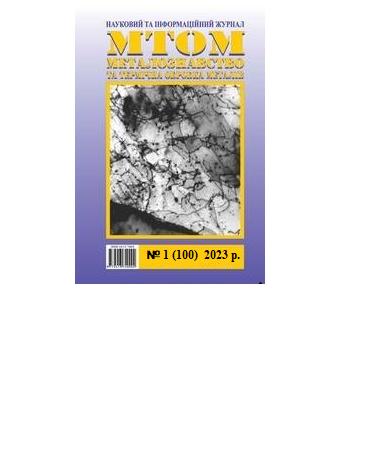THE RELATIONSHIP BETWEEN THE MECHANICAL PROPERTIES OF ARMOR STEEL AND ITS BALLISTIC RESISTANCE (overview)
DOI:
https://doi.org/10.30838/J.PMHTM.2413.280323.22.941Keywords:
metal armor, strength, hardness, impact work, ballistic resistanceAbstract
The relevance of the work. Today the industry is actively developing in the field of manufacturing means for protection of all types of armored vehicles against fire damage by small arms and artillery weapons. At present, ensuring high dynamic resistance of armor against modern weapons without increasing its thickness and, accordingly, the mass of the structure as a whole is achieved due to the use of various non-metallic materials (armor ceramics, high-strength fabrics, etc.) as part of compositions with traditional steel armor. The development and design of workable materials and structures of armor protection is a complex scientific and technical problem. To ensure high stability and survivability of armor, it is necessary to establish a relationship between the mechanical properties of armor steel and its ballistic characteristics. Purpose. Based on the analysis of literary sources, determine the relationship between the mechanical properties of steel armor and its ballistic characteristics. Methodology. The method of scientific and technical literature analysis regarding the requirements for armored obstacles is applied. The results. Analytical investigations of the relationship between the main mechanical properties of steel armor and its ballistic characteristics are conducted in the work, which will allow predicting the optimal combination of mechanical properties’ values that will ensure high ballistic resistance. Increasing the hardness of armor steel usually reduces the impact toughness of steels. It is noted that the ballistic characteristics of structural and armor steels are correlated with the tensile strength limit. The existence of a correlation between the strength properties of materials and their resistance to crack propagation under high-speed (explosive) loading is shown. For a number of materials, there is a close relationship between predicted and measured ballistic characteristics at high deformations associated with ballistic impact, when compressive flow stress is used as a measure of material strength. Increasing impact toughness, especially in high and ultra-high hardness classes, is an important task in the development of armor steel. Hardness limits are therefore set for specific grades of steel armor to control impact toughness during production and reduce the risk of fracture or other brittle damage for specific steel compositions and applications.
Downloads
Published
Issue
Section
License
Authors that are published in this journal agree to follow the conditions:
Authors reserve the right to the authorship of his work and cede the right to the journal of first publication of this work on conditions of the license under the Creative Commons Attribution License, which allows others to distribute it freely with the obligatory reference to the author of the original work and the first publication of the work in this journal.

